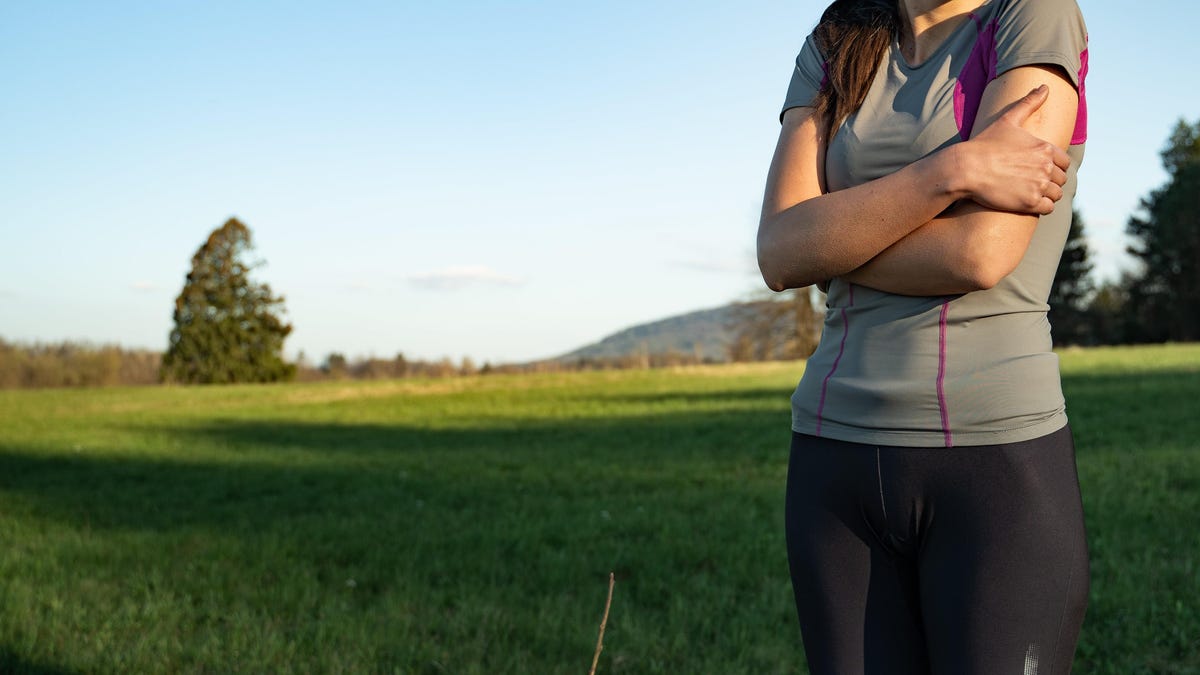Have you ever been in the middle of a run and gotten hit with a sudden wave of chills, goosebumps, or shivers, even though it’s hot as hades outside? Feeling cold and shivery when you’re working out isn’t uncommon, especially when it’s hot and humid, and isn’t harmful in itself—but it is an early warning of heat stress, so you should take it seriously, and take some steps to prevent things from getting worse.
Why people sometimes feel cold during hot weather workouts
Whenever you exert yourself, the blood flow to your skin increases and you sweat more. The sweat evaporating from your skin cools you down. If something interferes with the cooling system it can result in a similar response to having a fever: Chills, goosebumps, and/or feeling cold.
What to do if you experience coldness, shivers, or goosebumps during a workout
Getting chills while exercising is usually a sign that you should slow down, try to cool off, and drink more water. If you’re running, slow down to a walk. If you’re biking, lower the gear and/or coast. Or just stop exercising altogether and find somewhere shady to chill and drink some water.
Ideally, the chills should dissipate fairly quickly once you’ve cooled down for a few minutes. If the symptoms pass, there’s no need to seek medical attention, but be aware of any further warnings that point toward heat exhaustion or heat stroke. If you experience dizziness, nausea, cramps, extreme fatigue, vomiting, or a headache, and these symptoms don’t go away after a half hour or so of resting in a cooler place and drinking liquids, seek medical attention.
Chills while working out could also be a sign of low blood sugar, according to Nathaniel Jenkins, PhD, assistant professor in the Department of Health and Human Physiology at the University of Iowa. So you should try to eat a little something before working out, and consider carrying a snack on long runs or rides.
Water bottles of all kinds
How to prevent shivers, chills, or goosebumps while exercising
Lessening the chances that you’ll be cold and shivery while exercising is all about hydration and keeping cool, so make sure you’re wearing breathable, loose fitting clothing and working out during the cooler parts of the day if you can.
There are no hard and fast rules for hydration that apply to everyone (and hydration hacks are very dumb), but here are basic guidelines published by the University of Colorado’s CU Sports Medicine And Performance Center:
- Don’t wait until you’re thirsty to drink
- Drink two or three cups of water a couple hours before exercising
- Drink 1 cup 5 to 10 minutes before exercise
- Drink 1 cup every 15 to 20 minutes during exercise, especially in warmer weather.
How much water a person needs varies wildly based on any number of factors, so there’s no need to measure amounts and set timers. Just drink water before, during, and after your workout, and drink more when it’s hotter. It’s usually okay to rely on thirst to tell you when to drink, but you may want to be more proactive in hot weather.
Do you need electrolytes?
When exercising in hot weather, you should add some electrolytes and carbohydrates to your hydration regimen if you exercise vigorously for longer than 60 minutes, according to verywellfit. But the importance of electrolytes has been overstated massively to sell sports drinks, and they usually aren’t needed for moderate exercise.
Consider electrolyte drinks if you know you’ll be sweating a ton. For example, the American College of Sports Medicine notes that football players (who are typically large, wear padding, and practice for hours in the heat) will have more need for electrolyte drinks than a petite person jogging at an easy pace.
Why do you sometimes get shivers or feel cold after a workout?
It’s normal to feel cold when you’re finished working out, and it’s usually not a sign of dehydration or heat illness. Your body temperature may still be high after a workout, even if the room isn’t warm, so you’ll keep sweating for a bit while everything evens out. If this happens, put on a sweatshirt.

